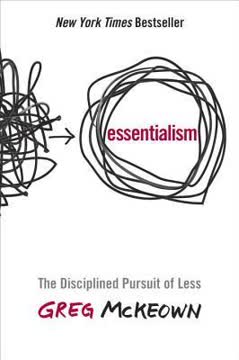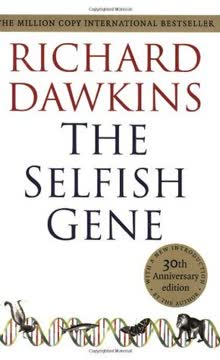Key Takeaways
1. Intellectual monopoly hinders innovation and economic progress
Intellectual monopoly is not a cause of innovation, but it is rather an unwelcome consequence of it.
Monopoly stifles progress. Contrary to popular belief, intellectual property rights often impede rather than promote innovation. By granting exclusive rights to ideas, these laws create artificial scarcity and limit the spread of knowledge.
- Negative effects of intellectual monopoly:
- Reduced competition
- Higher prices for consumers
- Limited access to ideas and innovations
- Slower technological progress
Historical examples and economic studies consistently show that industries tend to innovate more rapidly and efficiently in the absence of strong patent and copyright protections. The myth that intellectual property rights are necessary for innovation persists due to lobbying efforts by large corporations and entrenched interests, rather than empirical evidence.
2. Historical evidence contradicts the necessity of patents and copyrights
Most great inventions are cumulative and simultaneous; most great inventions could have been introduced simultaneously, or almost so, by many different inventors and companies, competing among them to improve the product and to sell it to consumers at a price as low as possible.
History challenges IP myths. Numerous historical examples demonstrate that significant innovations occurred without the protection of patents or copyrights. Many industries thrived and progressed rapidly in environments with weak or nonexistent intellectual property laws.
Examples of innovation without strong IP protection:
- The auto industry in the early 20th century
- The fashion industry
- The food and beverage industry
- The computer hardware industry in its early stages
These cases illustrate that competition, rather than monopoly rights, often drives innovation and economic progress. Inventors and creators found ways to profit from their work through first-mover advantages, complementary products, and continuous improvement.
3. The software industry thrived without strong intellectual property protection
If people had understood how patents would be granted when most of today's ideas were invented, and had taken out patents, the industry would be at a complete standstill today.
Software innovation without patents. The software industry experienced its most rapid period of innovation and growth before the widespread use of software patents. Many fundamental software innovations, including graphical user interfaces, compilers, and databases, were developed without patent protection.
Key points about software and IP:
- Patents were not widely used in software until the 1990s
- Open-source software demonstrates the power of collaborative innovation
- Patent thickets now hinder software development in many areas
The success of the software industry without strong IP protection challenges the notion that such protection is necessary for technological progress. In fact, the introduction of software patents has led to increased litigation and potential barriers to entry for new innovators.
4. Intellectual property laws often lead to wasteful rent-seeking behavior
Monopolists, apparently, can conceive of only one way of making money, that is bullying consumers and competitors to put up or shut up.
Rent-seeking wastes resources. Instead of promoting innovation, intellectual property rights often encourage companies to engage in unproductive activities aimed at extending and exploiting their monopoly power.
Examples of rent-seeking behavior:
- Lobbying for extended copyright terms
- Filing broad, vague patents to block competitors
- Engaging in costly patent litigation
- Developing digital rights management (DRM) systems
These activities divert resources from productive innovation and research, ultimately harming economic progress and consumer welfare. The costs of this rent-seeking behavior often outweigh any potential benefits of intellectual property protection.
5. Simultaneous invention is common, challenging the justification for patents
Simultaneous discoveries tend to be the rule rather than the exception, and, in the presence of a patent system, they almost always lead to an ugly story.
Many minds, one idea. Throughout history, many important inventions and discoveries have been made independently by multiple individuals or teams around the same time. This phenomenon of simultaneous invention challenges the notion that monopoly rights are necessary to incentivize innovation.
Notable examples of simultaneous invention:
- Calculus (Newton and Leibniz)
- Telephone (Bell and Gray)
- Theory of evolution (Darwin and Wallace)
- Radio (Marconi, Tesla, and others)
The prevalence of simultaneous invention suggests that ideas are often "in the air" due to the cumulative nature of knowledge and technological progress. Granting exclusive rights to one inventor in these cases can unfairly penalize others who made similar contributions and hinder further development in the field.
6. Copyright extensions have not increased creative output
If expanding the market meant only a few new people coming in, and there were lots of valuable "marginal" ideas to be produced if only they could earn a few dollars more, then maybe lowering intellectual property protection would not be such a good idea.
Longer copyrights, less creativity. Despite repeated extensions of copyright terms, there is little evidence that these changes have led to increased creative output. In fact, overly long copyright protection may hinder creativity by limiting access to existing works and reducing the public domain.
Effects of copyright extension:
- Reduced availability of older works
- Increased costs for new creators
- Limited remix and reuse of cultural materials
- Concentration of control in the hands of large media companies
Studies have shown that the vast majority of copyrighted works earn their returns within the first few years after publication. Extending copyright terms beyond this period primarily benefits a small number of highly successful works and their corporate owners, while imposing costs on society as a whole.
7. Patents in the pharmaceutical industry may not be as beneficial as commonly believed
The case for patents in pharmaceuticals is a lot weaker than most people think – and so, apparently, even under the most favorable circumstances patents are not necessarily good for society, for consumers, or in this case, for sick people.
Pharma patents: A mixed blessing. While the pharmaceutical industry is often cited as the strongest case for patent protection, a closer examination reveals that the benefits of drug patents may be overstated. The high costs of drug development are often used to justify strong patent protection, but this argument ignores several important factors.
Challenges to pharmaceutical patent justification:
- Many drug discoveries build on publicly funded research
- The patent system incentivizes research on profitable, not necessarily important, diseases
- Patent monopolies lead to high drug prices, limiting access for many patients
- Alternative funding models, such as prize systems, could incentivize innovation without monopoly pricing
Historical evidence shows that many countries developed strong pharmaceutical industries without product patents. Moreover, the increasing costs of drug development may be partly due to the patent system itself, which encourages wasteful duplication of research efforts and excessive marketing expenditures.
8. Competition, not monopoly, drives innovation and economic growth
Improving transmission and reproduction technology may increase, rather than decrease, competitive rents earned by the innovator.
Competition fuels progress. Contrary to the argument that monopoly rights are necessary to incentivize innovation, historical and economic evidence suggests that competition is a more powerful driver of technological progress and economic growth.
Benefits of competitive innovation:
- Faster pace of improvement and refinement
- Lower prices for consumers
- Greater variety of products and approaches
- More efficient allocation of resources
In competitive markets, innovators are driven to continuously improve their products and processes to stay ahead of rivals. This leads to a more dynamic and innovative economy than one dominated by entrenched monopolies protected by intellectual property rights.
9. Intellectual property laws can stifle creativity and knowledge sharing
Certainly it is hard to argue that the social cost of giving Amazon a monopoly over purchasing by clicking a single button is somehow offset by the social benefit of the information revealed in the patent application.
IP laws hinder collaboration. Strong intellectual property protections can create barriers to the free exchange of ideas and information, which is crucial for scientific and technological progress. By restricting access to knowledge and tools, these laws can slow down innovation and limit creativity.
Negative effects of strong IP laws on knowledge sharing:
- Reduced scientific collaboration
- Barriers to entry for new innovators
- Fragmentation of knowledge across patent holders
- Increased secrecy in research and development
Alternative models, such as open-source software and creative commons licensing, demonstrate that innovation and creativity can thrive in environments that encourage sharing and collaboration. These approaches often lead to faster progress and more robust solutions than those developed under traditional intellectual property regimes.
Last updated:
FAQ
What's Against Intellectual Monopoly about?
- Critique of IP Laws: The book argues that intellectual property laws, such as patents and copyrights, hinder rather than promote innovation.
- Historical and Economic Analysis: It uses historical examples and economic theories to demonstrate how monopolistic practices can stifle competition and delay technological advancements.
- Authors' Perspective: Michele Boldrin and David K. Levine present a case for innovation thriving in competitive markets without the constraints of intellectual monopoly.
Why should I read Against Intellectual Monopoly?
- Challenge to Conventional Wisdom: The book offers a fresh perspective on intellectual property, questioning the necessity of patents and copyrights for innovation.
- Evidence-Based Arguments: It is grounded in historical examples and economic theory, providing a compelling case for re-evaluating current IP laws.
- Broader Implications: The discussions extend to cultural and social issues, making it relevant for those interested in law, economics, and creativity.
What are the key takeaways of Against Intellectual Monopoly?
- IP Inefficiency: The authors introduce "IP-inefficiency," highlighting the negative impact of intellectual monopolies on innovation and economic growth.
- Historical Context: They argue that many innovations occurred without patent protection, suggesting competition fosters creativity more effectively.
- Alternative Models: The book discusses collaborative innovation and open-source models as more effective than those protected by IP laws.
What are the best quotes from Against Intellectual Monopoly and what do they mean?
- "Intellectual property is an unnecessary evil.": This encapsulates the authors' thesis that the social costs of IP outweigh its benefits.
- "The industrial revolution was not driven by patents.": This challenges the narrative that patents were crucial for technological advancements during the industrial revolution.
- "Everyone wants a monopoly.": This highlights creators' desire to protect their work, but the authors argue such monopolies harm the economy and stifle competition.
How do Boldrin and Levine define "IP-inefficiency" in Against Intellectual Monopoly?
- Definition: IP-inefficiency refers to the negative consequences of intellectual monopolies, including stifled innovation and reduced economic growth.
- Mechanisms of Harm: Monopolists often focus on suppressing competition rather than innovating, leading to resource waste and technological slowdown.
- Real-World Examples: The book cites the pharmaceutical industry, where patent protections lead to high prices and limited access to essential drugs.
What historical examples do the authors use to support their arguments in Against Intellectual Monopoly?
- James Watt's Patents: Watt's patents on the steam engine delayed innovation and efficiency improvements, illustrating monopolistic practices' detrimental effects.
- The Cotton Gin: Eli Whitney's experience shows how enforcing patent rights can hinder broader industry growth and innovation.
- Open Source Software: The success of the open-source movement is highlighted as a modern example of rapid innovation without IP protections.
How do the authors suggest innovation can thrive without intellectual property in Against Intellectual Monopoly?
- Emphasis on Competition: Competition encourages innovation by allowing multiple players to improve upon existing ideas without patent constraints.
- Collaborative Innovation: They advocate for sharing information and building upon each other's work, leading to faster advancements and better products.
- Market Dynamics: In a competitive market, first mover advantage and capturing social surplus incentivize innovation without monopolistic protections.
What reforms do Boldrin and Levine suggest for intellectual property laws?
- Gradual Reduction of Patent Terms: They advocate for reducing patent terms to encourage competition and innovation, suggesting a cut to four years for pharmaceuticals.
- Public Financing of Clinical Trials: Propose government funding for clinical trials to reduce financial burdens on pharmaceutical companies and improve drug accessibility.
- Mandatory Licensing: Recommend implementing mandatory licensing for unused patents to ensure innovations can be utilized and built upon by others.
How does Against Intellectual Monopoly address the pharmaceutical industry specifically?
- High Costs of Drug Development: The authors highlight the inflated costs of bringing new drugs to market due to the patent system.
- Impact on Innovation: Patents do not significantly increase pharmaceutical innovation rates, often leading to redundant "me-too" drugs.
- Access to Medicines: Patent protections can limit access to essential medicines, particularly in developing countries, and the book suggests reforms to improve this.
What is the authors' stance on the relationship between IP laws and economic growth?
- Negative Correlation: Stronger IP laws do not correlate with economic growth; competition is a more effective driver of innovation and prosperity.
- Historical Evidence: Examples show countries with less stringent IP protections experienced significant economic growth and innovation.
- Call for a New Paradigm: The authors advocate for a shift in how society views IP, promoting competition and collaboration over monopolistic practices.
How do the authors view imitation in the context of innovation?
- Positive Role of Imitation: Imitation is a vital part of innovation, allowing new entrants to improve upon existing ideas and products.
- Economic Development: Societies benefit from a culture of imitation, fostering competition and driving economic growth.
- Contrast with IP Laws: IP laws discourage imitation, stifling the competition that leads to innovation.
How do Boldrin and Levine address the argument that patents are necessary for funding innovation in Against Intellectual Monopoly?
- Counter-Argument: They challenge the notion that patents are essential for securing funding, citing successful innovations without patent protection.
- Alternative Funding Models: Suggest mechanisms like venture capital and market demand can incentivize innovation without monopolistic protections.
- Historical Evidence: Examples of industries thriving without patents demonstrate that innovation can be funded through competitive markets.
Review Summary
Against Intellectual Monopoly receives mostly positive reviews for its thorough examination of intellectual property rights. Readers appreciate the book's empirical approach, historical examples, and challenging arguments against patents and copyrights. Many find it eye-opening and thought-provoking, praising the authors' economic analysis. Some criticize the writing style as repetitive or dense. Several reviewers note the book's libertarian perspective, which some appreciate and others find limiting. Overall, it's considered an important contribution to the debate on intellectual property, though potentially controversial.
Similar Books










Download PDF
Download EPUB
.epub digital book format is ideal for reading ebooks on phones, tablets, and e-readers.




